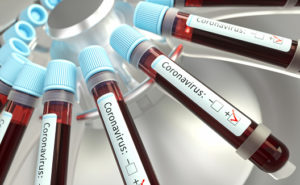The novel coronavirus that was first reported in December 2019 from Wuhan, China has been renamed SARS-CoV-2, and causes the corresponding disease coronavirus disease 2019, or COVID-19 for short. As of March 2nd, the World Health Organization has reported almost 90,000 COVID-19 cases with over 3,000 deaths worldwide. The mean incubation period of the virus, the time from infection to symptom onset, appears to be 5-6 days (range: 1-13 days). COVID-19 is associated with a wide spectrum of symptoms (fever, malaise, dry cough, and shortness of breath) that range in severity. The fatality rate of the virus has been reported to be about 2%, but when asymptomatic and mildly symptomatic cases are included, the fatality rate may be considerably lower than 1%. Although the virus initially jumped from animals to humans, human-to-human transmission is now occurring in several countries.
At this time, neither the AABB, the FDA, nor the CDC are recommending any action by blood collection establishments since the risk for transfusion-transmission of SARS-CoV-2 is only theoretical. There is no precedent for transfusion-transmission of any respiratory virus including influenza, MERS, SARS, or SARS-CoV2. Studies have detected viral RNA in serum or plasma from infected patients with SARS, MERS, and SARS-CoV2, but the infectivity of the detected nucleic acid is unknown. Some blood collection establishments are implementing 28-day travel deferrals for areas with SARS-CoV-2 outbreaks and all screen out febrile donors already. Theoretically, an asymptomatic but viremic period could pose a risk to transfusion recipients, so the medical community must remain vigilant and able to trace and recall blood products if necessary. Currently, SARS-CoV-2 poses a greater risk to blood product inventory due to a disruption of supplies needed to process blood products or a decrease in availability of donors where local transmission is widespread. Blood collection establishments should follow public health advice for their regions to minimize misunderstandings about the risk of transfusion-transmission for SARS-CoV-2 and minimize disruptions to blood supply. Until the basic reproduction number of the virus falls below one, the number of SARS-CoV2 infections will continue to rise and the medical community must be prepared.
References:

